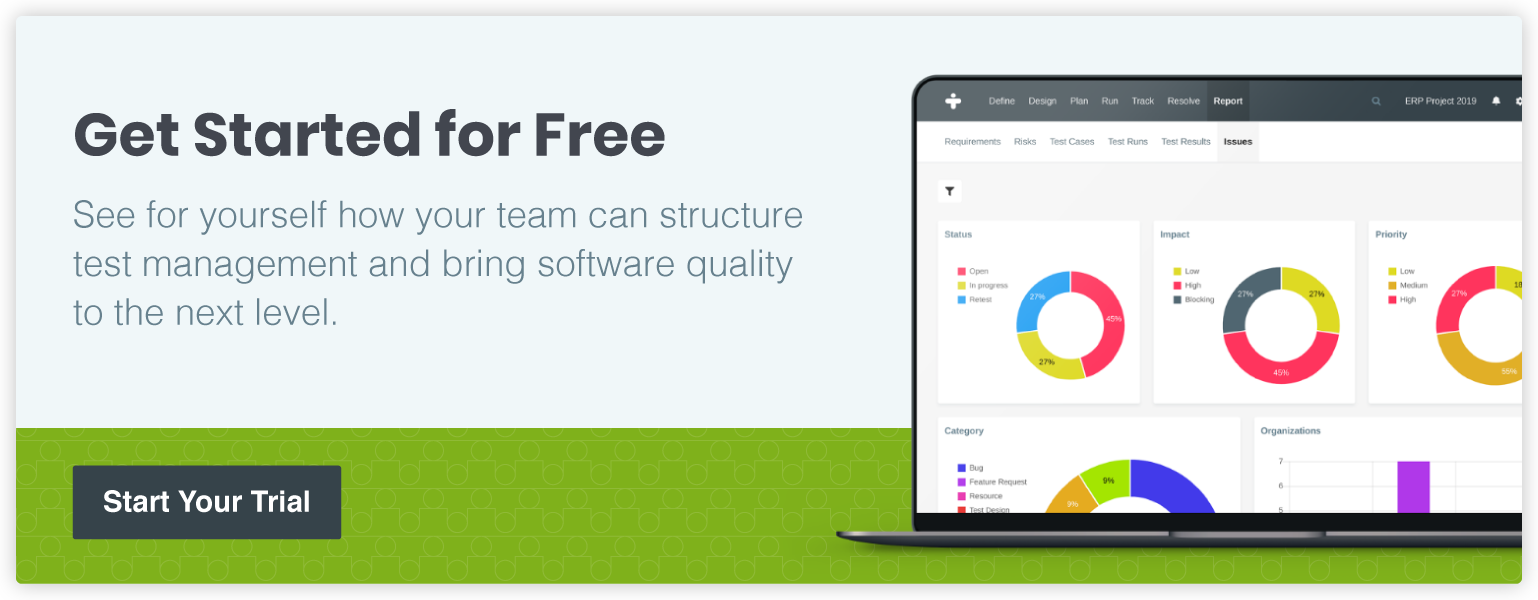Discover the Secrets to Greater Efficiency in Manual Software Testing
Testing your software is a vital part of ensuring your products meet customer expectations. However, if a manual testing process is not properly structured and managed, the whole testing experience can be inefficient and stressful, and could even delay the delivery of your product.
This is why many organizations implement an intuitive, structured test management process. By defining the objectives of the test and preparing necessary accelerators, such as user acceptance testing templates, test management can make complex IT project testing easier. Although every testing effort will be unique, following a sequenced and repeatable series of steps can help to simplify the experience and generate better results on the back end.
Whether you have a manual testing process already in place that needs some tweaking or you’re looking to generate one for the first time, here are six key steps to get your team where they need to be.
Preparation Phase
These first three stages are important to lay the foundation for your testing effort, design your testing process, and allocate your resources accordingly.
Stage 1: Define Requirements and Risks
The first step in your manual software testing process will shape the rest of the testing experience for your product and for your testers. This is why it is vital to create well-defined requirements that capture stakeholder needs, validate test results, and link directly to the ultimate business objectives. Armed with the requirements, the quality assurance and testing teams should be able to clearly communicate how well the software fits the organization’s needs.
At the same time, it is also necessary to outline any projected risks that may be encountered during the testing process so mitigations can be prepared. These potential risks should be categorized by severity to help prioritize resources.
To simplify and clearly articulate your testing requirements and risks, your team can go to the next level and leverage an industry-leading testing solution like TestMonitor to record, track, categorize, and manage outputs from stage one for use in the later stages.
Stage 2: Design Test Suites and Test Cases:
The next stage focuses on specifically defining how the software should perform to verify that a feature or function was developed correctly. This step will involve creating test cases and, ultimately, combining related test cases into test suites.
These test cases should include:
- Clear instructions on how the tester can check the software behavior based on the type of test.
- A test case name, the expected results, and a structure to capture those results.
- A method to link risks and requirements to the relevant test cases.
Stage 3: Plan Test Runs and Milestones
The final stage of the preparation phase includes sequencing and planning the overall testing process, including when each test suite will be run, by whom, and with what tools.
As the testing schedule forms and tests are assigned to testers, the overall testing effort can be grouped into milestones to help track progress.
Execution Phase
The execution phase is where the rubber meets the road when it comes to testing. Your testing team is focusing on running the tests while your management team is tracking results, handling issues, and preparing to present the final results.
Stage 4: Run the Assigned Tests
Assign the test cases to the relevant testers, establish methods to enable ongoing communication with the testing managers, and lay out expectations when it comes to capturing and documenting feedback.
One way to expedite this process and ease the burden on testers is to provide options and examples for feedback. TestMonitor’s solution helps to facilitate the capture of feedback with an intuitive smiley-based scoring system that can be used to easily summarize the testing experience for that test case.
Stage 5: Track the Progress
While stage four is underway, the testing management team should continuously monitor all activities and note the test cases that have passed and failed to begin to identify trends.
TestMonitor can make deeper analysis easier for testing managers with its ability to filter results by requirement, milestone, or outcome.
Stage 6: Resolve Project Issues and Report Results
Finally, as testing nears completion, it is time to organize and prioritize issues that were identified for resolution and assign them to the appropriate owners. This issue tracking and the overall testing results can then be shared with the necessary stakeholders.
If tests were set up using TestMonitor, this issue resolution and reporting process can easily be done within the solution’s interface. For example, issues that are linked to test cases and, ultimately, the requirements, can be assigned to users to track until they are resolved. The same is true for reports—stakeholders can log in to the TestMonitor dashboard for an overall look at the testing results and easily drill down for more information.
Ready for a new testing experience?
Although no manual software testing experiences are identical, test management tools and practices have evolved to help simplify the process and make your team more efficient.
TestMonitor, a solution specifically designed to enable software testing, makes each step of the software development testing process more efficient and more collaborative using built-in tools and predefined test cases and templates.
Ready to try out our industry-leading solution for yourself? Contact us for a free demo.







